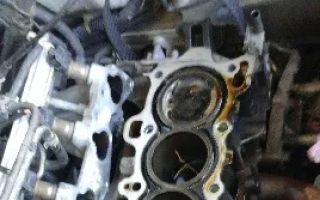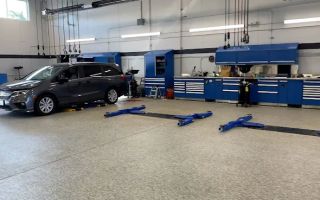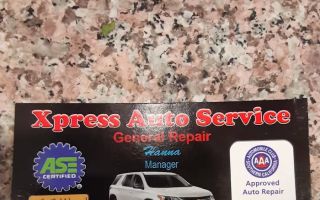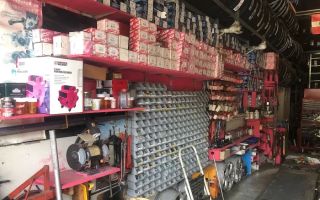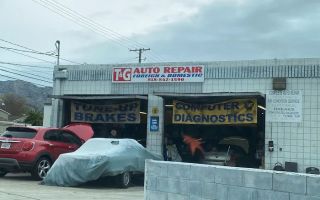How to Choose a New Battery for My Car: A Comprehensive Guide for Drivers
Why You Might Need a New Battery
Replacing a car battery might seem like a straightforward task, but there are several factors to consider before purchasing a new one. Understanding why your car battery needs replacement can help you make an informed decision. Car batteries typically last 3-5 years, depending on usage, climate, and maintenance. However, some common signs that indicate it’s time for a new battery include:
- Frequent Jump Starts: If your car often needs a jump start, it’s a clear sign that your battery is not holding charge effectively.
- Dim Headlights: If your headlights appear dimmer than usual, it could be due to a weakening battery.
- Slow Engine Crank: A slow start when turning the key or pressing the start button can signal a weak battery.
- Check Engine Light: Sometimes, the check engine light will illuminate due to battery issues, especially in newer vehicles that monitor the battery’s condition electronically.
Being proactive about recognizing these signs can prevent unexpected breakdowns and help you choose the right replacement battery before your car completely fails to start.
Types of Car Batteries
Choosing the right type of battery for your car depends on several factors such as the car's make and model, and whether it uses traditional or newer technology. Below are the most common types of car batteries:
- Lead-Acid Batteries: These are the most common and affordable type of car battery. They are typically used in older vehicles and standard vehicles without advanced electrical systems.
- AGM (Absorbent Glass Mat) Batteries: AGM batteries are more efficient and provide better performance for cars with modern electrical systems. These are commonly found in luxury cars, sports vehicles, and cars with a lot of electronic accessories.
- Gel Cell Batteries: This type uses a gel electrolyte instead of liquid, making them spill-proof and safer for extreme temperatures. They are ideal for cars that face extremely hot or cold climates.
- Enhanced Flooded Batteries (EFB): EFBs are similar to AGM batteries but are often used in vehicles with stop-start systems to improve fuel efficiency.
Each type of battery has its pros and cons, and choosing the right one depends on your car’s electrical needs. For instance, vehicles with advanced electrical systems or a lot of power-demanding accessories should choose AGM or EFB batteries for better performance and longevity.
How to Select the Right Battery for Your Car
Now that you understand the different types of batteries, the next step is to choose the right one for your vehicle. Here’s what you need to consider when selecting a new battery:
- Car Make and Model: Not all car batteries fit every vehicle. Check your owner’s manual or consult your car’s manufacturer to find the battery specifications for your make and model.
- Battery Size: Car batteries come in various sizes. Make sure you choose a battery that fits the battery tray in your car and can handle the power requirements of your vehicle.
- Cold Cranking Amps (CCA): CCA measures a battery’s ability to start your car in cold temperatures. If you live in a colder climate, you’ll need a battery with a higher CCA rating for reliable performance in freezing conditions.
- Reserve Capacity (RC): RC measures how long the battery can run on its own without the engine’s help. A higher RC is beneficial if you frequently drive short distances or have a lot of electrical accessories in use.
- Brand and Warranty: Choosing a trusted brand can make a significant difference in performance. Look for reputable manufacturers and make sure the battery comes with a warranty for added peace of mind.
By considering these factors, you’ll be able to select a battery that ensures optimal performance and longevity for your vehicle.
Cost of Replacing a Car Battery
The cost of replacing a car battery can vary depending on several factors such as the type of battery, the brand, and where you purchase it. On average, a standard lead-acid battery can cost between $50 to $120, while more advanced AGM or EFB batteries may cost between $150 and $250 or more. If you’re having the battery installed by a mechanic or auto repair shop, expect to pay an additional $20 to $50 for labor.
It’s also important to consider the potential for hidden costs. For example, if your battery is not properly disposed of, you may face additional fees for recycling. Some stores and services offer trade-in discounts or free disposal, which can help reduce the overall cost of replacement.
To get the best value, shop around for deals, check for manufacturer promotions, and see if your local auto parts store offers installation for free or at a reduced rate.
Real-Life Story: Emergency Car Battery Replacement
Last winter, our customer Mike found himself stranded on the side of the road in the middle of a snowstorm. His car wouldn’t start, and after a few attempts at jump-starting it, he realized the battery had completely failed. With no nearby mechanic, Mike called a towing company that also offered emergency roadside assistance services. Within an hour, a technician arrived, assessed the situation, and installed a new battery on-site.
Mike was back on the road quickly, and the technician made sure to explain the importance of regularly maintaining the battery, especially in extreme temperatures. This experience highlighted the value of having a reliable towing service, not only for emergencies but also for situations like battery failure. At Rescue & Towing, we ensure that you get back on the road swiftly, no matter the issue.
Preventative Maintenance and Battery Care
While choosing the right battery is important, proper maintenance can help extend the life of your car’s battery. Here are some tips for keeping your battery in good condition:
- Keep Terminals Clean: Clean any corrosion from the battery terminals regularly to ensure a good connection.
- Avoid Short Trips: Short trips may not give your battery enough time to fully charge. Try to take longer drives periodically to keep the battery charged.
- Check the Battery Voltage: Regularly checking the battery’s voltage can help you spot any issues before they become serious problems.
- Inspect the Battery: Look for signs of damage, such as bulging or leaking, and replace the battery if needed.
With proper care, a well-chosen battery can last you for several years, preventing those inconvenient and expensive breakdowns.
If you're in need of a new battery or roadside assistance, Rescue & Towing is here to help. Our experienced team provides fast, reliable service for car battery replacement, lockouts, and towing. Visit Rescue & Towing for more information or to book your next service.


